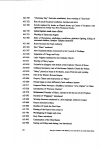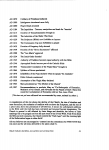50 QUOTES FROM THE SAINTS THAT ARE A STIMULUS FOR THOUGHT.
This video presents a selection of quotes from holy people from whom we can learn a lot and look at the world from a different perspective. Saints like Saint Pio, Saint Charbel, Saint Augustine and many others can help us develop our faith and draw closer to God through Jesus Christ. Saint Padre Pio says: "SATAN HAS ONLY ONE DOOR BY WHICH HE CAN ENTER OUR SOUL". Let's listen to his words and perhaps it is through the intercession of the saints that God's will will begin to work in our lives. Let us pray, dear ones, and let us strengthen ourselves in faith. Let's read God's word, believe the gospel and live as Jesus Christ wants. When we look at the lives of the saints, we see that they did God's will. They only wanted love and followed it. God is all love; through love man and the whole world were created. Let us thank God for all graces and blessings. Let us pray to the Virgin Mary to cover us with her mantle, let us pray that conversions may multiply in the world through her. Let us pray, dearly beloved. Let us pray, dear ones, that the good God will strengthen our faith, that he will strengthen our courage and perseverance. In connection, we pray every day, we pray the holy rosary, which is a powerful defense against the influence of the evil spirit. Let us not reject the invocation of the Virgin Mary, let us not reject God's love and the sacrifice of Jesus Christ. Let us enjoy the sacraments of the Eucharist, confession and penance. Let's think about the Holy Scriptures and follow Jesus Christ. The Bible contains a path that every person should follow. Let us not be deceived by the evil that constantly seeks out weak and lukewarm souls. Let us strengthen our faith in Jesus Christ, let us strengthen our spirit to persevere in these difficult times. Let us pray, dear ones, because prayer is so necessary and necessary, let us pray for sinners and for conversion, let us pray constantly, let us persevere in faith and love. Let us pray, dear ones, for conversion, let us pray for peace in the world, let us pray for humanity to throw off the shackles of sin and return to the one God. God does not punish humanity, He does not want it, because He is love, but humanity attracts suffering and misfortune to itself. We are all brothers and sisters, let us unite in prayer to our God the Father to have mercy on the world.
1



